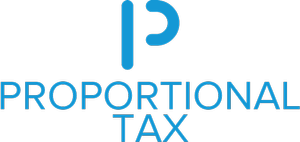We talked in our separate consultations about what a regressive and progressive taxation system is. About the third type of taxation system – proportional – we will tell in this material.
What does proportional taxation mean
The proportional tax system is a typical practice in Russia in the calculation of taxes and fees. It is based on the use of proportional tax rates for the calculation of taxes and fees from individuals and organizations.
The proportional tax rate is a tax rate that does not change as the tax base increases or decreases. This means that the tax rate for a particular object of taxation is fixed. Accordingly, how many times the tax calculation base increases or decreases, the tax itself increases or decreases accordingly.
The proportional tax assumes that the average tax rate remains unchanged, regardless of the size of income.
Let’s illustrate the above with the example of personal income tax. Suppose tax rates are such that a household pays 10% of its income as a tax. Of course, it will be a proportional income tax. Now imagine that the nature of the change in tax rate is such that a household with an annual taxable income of less than $ 1,000. pays 5% in income tax; household with income of $ 1,000. up to 2000 dollars., pays 10%; from 2000 dollars up to 3000 dollars – 15%, etc. This, as we have already explained, will obviously be a progressive income tax. And the last case: when you have to pay 15% of income in the form of tax, if you get less than $ 1000 .; 10% – if you get from 1000 dollars. up to 2 thousand dollars .; 5% – if your income is in the range of 2 thousand dollars. up to 3 thousand, etc. This is a regressive income tax. In general terms, progressive taxes are those taxes whose burden places the most on the rich; regressive taxes hit the poor the hardest.
Any discussion of the principles of solvency and taxation of the benefits obtained ultimately leads to the issue of tax rates and the way in which these tax rates change as income grows.
Definitions Taxes are usually divided into progressive, proportional and regressive. These definitions are based on the relationship between the tax rate and income for the simple reason that all taxes — regardless of whether they are levied on income, or on products, or buildings, or a piece of land — are ultimately paid from someone else’s income. .
1. A tax is progressive if its average rate rises as income increases. Such a tax involves not only a larger absolute amount, but also a larger proportion of the collected income as income increases.
2. Regressive tax – a tax whose average rate decreases as income grows. Such taxes require less and less income when it is increased. Regressive tax may bring a large absolute amount, and may not lead to an increase in the absolute value of the tax with increasing income.
We have already noted that the federal personal income tax is not very progressive with a marginal tax rate ranging from 15 to 33%. We know that the payment of interest on mortgages, the amount of property tax, income from state and government bonds are not taxed. This undermines the progressive nature of taxes.
At first glance, the general sales tax, say, with a 3 percent discount will seem proportional. However, in reality, with respect to income, it is regressive. The reason for the regressivity of this tax is that it affects a large part of the income of the poor man, in contrast to the income of a rich person. The latter can avoid the tax on a part of his income, which he puts aside in the form of savings, while the poor man does not have the opportunity to make savings. Example: “poor” Smith has an income of 15 thousand dollars. and spends it all. “Rich” Jones has an income of 30 thousand dollars., But spends from it only 20 thousand dollars. Assuming that the 3 percent sales tax applies to the expenses of each individual, we will see that Smith will
pay 450 dollars. (3% of 15 thousand dollars.) In the form of sales tax, and John will pay 600 dollars. (3% from 20 thousand dollars.). Note that, while Smith’s total income is $ 15,000. subject to sales tax, this tax is taxed only 2/3 of 30 thousand dollars. income of Jones, who pays in the form of this tax 600 dollars. (or 2% of the total income of 30 thousand dollars.). Therefore, we can conclude that general sales tax is regressive.
